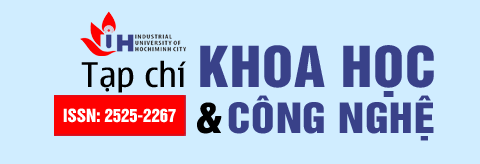STUDY ON PVC AND PET SEPARATION IN RECYCLING APPLICATION USING FROTH FLOTATION AFTER HYDROPHILICATION BY CaO MATERIAL SYNTHESIZED FROM CHICKEN EGGSHELLS
Main Article Content
Abstract
Polyvinyl chloride (PVC) accounts for a large proportion of plastic waste and often has a serious impact on the environment due to the formation of toxic chloride-containing compounds during heat recycling. Therefore, PVC needs to be separated from the mixture and has a suitable recycling method. However, PVC separation is difficult, especially, on a mixture with polyethylene terephthalate (PET) because of their similar density and hydrophobic surface. This study shows the method of separating PVC and PET by froth flotation combined with the surface pretreatment process by CaO material synthesized from the chicken eggshell. After treatment, the PVC surface tends to be more hydrophilic and sink in the flotation column, while PET floats on the flotation column. 100% PVC and PET are completely separated under optimal conditions. This is a promising method to improve the quality of plastic recycling by separating PVC from the mixture.

